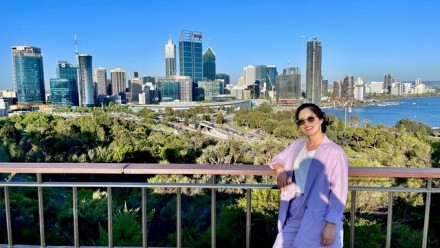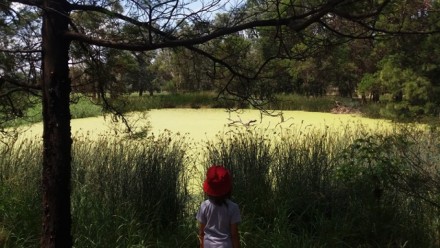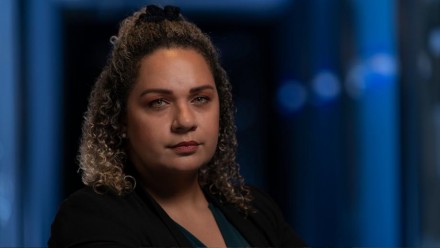Handing back control in the battle against cervical cancer
Share
Associate Professor Lisa Whop is putting up a winning fight against cervical cancer — for all women. Rachel Curtis reports.
When Associate Professor Lisa Whop is a grandmother, she wants to tell the story of how she helped stop cervical cancer. Her dream isn’t far from becoming reality. Australia is set to become the first country to eliminate cervical cancer, except for one significant failing; the disease affects Indigenous women at more than twice the rate of the overall population.
That’s why Whop is lobbying for a do-it-yourself solution that could help empower and protect all women from the ravages of cervical cancer. “The possibility of elimination is just so exciting,” the Torres Strait Islander and ANU epidemiologist says. “It’s the first cancer where we have identified the virus — we’ve got a vaccine and we’ve got treatment.”
Whop has been on the frontlines of a battle with this cancer for the past decade and is Australia’s leading authority on Indigenous cervical cancer screening. “I just love that we are ahead of this virus because of the science — I’m a massive science nerd,” she says.
“Technology has caught up, and we’re going to be able to eliminate cervical cancer. But what does it mean to achieve cancer elimination if you are not achieving it for all people?
"I want to be able to say ‘I helped eliminate cervical cancer in Australia, for everyone"
“When we talk about cervical cancer elimination in Australia, Aboriginal and Torres Strait Islanders are completely ignored.
"There’s an insane shameful inequity that Aboriginal and Torres Islander women are experiencing cervical cancer at the same rates as developing regions of the world, despite having access to vaccination and screening programs.
“This inequitable burden for Aboriginal and Torres Strait Islander women is profound, and yet neglected in every way possible. It’s neglected because it’s a women’s issue and because it is an issue impacting black women."
Whop’s research is helping end this neglect. She was the first researcher to analyse cervical cancer screening rates for Aboriginal and Torres Strait Islanders on a population level, finding only one-third were participating. Two-thirds of First Nations peoples are not participating in screening regularly, or at all.
No need to fear the pap smear
One of Whop’s solutions, amid systematic change, is a do-it-yourself test for human papillomavirus (HPV). HPV is a common sexually transmitted infection responsible for almost all cases of cervical cancer and 90 per cent of anal cancers and genital warts. The test uses a “really long earbud” swab to take a sample to detect HPV —an early warning sign of cervical cancer. It replaces the pap smear and can be done at home or at GP clinics.
Whop is researching how the self-collection test could increase screening rates for Indigenous populations and potentially put Australia on track to conquer this cancer. “The science on self-collection is solid and it shows it is just as good as samples collected by GPs,” she says. “It hands back control to women and could help navigate some of the barriers that stop people from screening.”
Whop says some people find visiting a GP for screening to be invasive. “Lots of women say the speculum is cold, sometimes painful or sometimes not. You might want access to a female GP, you might have your kids with you, you may have had previous trauma or abuse,” she says. “Women also say they don’t want to go to their GP for screening because then they feel like they can’t talk to them after that. For some women, even just the option of being offered self-collection or clinical collection gives them a better sense of ownership over it.”
However, getting ahead of cervical cancer is not just about screening. “We need to vaccinate, screen and treat. If we screen, we also need the appropriate follow up and treatment,” Whop says.
Great expectation for global elimination
The World Health Organization (WHO) has a global strategy setting out the same three targets to be met by every country by 2030. The strategy calls for 90 per cent of girls to be vaccinated against HPV, 70 per cent of women to be screened at least twice in their lifetime with a HPV test, and 90 per cent of women to have access to treatment.
Whop says to meet WHO’s goals, cervical cancer incidence must be reduced by about 70 per cent in Indigenous women in Australia, but we are a long way from reaching that target. “Australia urgently needs to address our systemic failure to care and provide health for Indigenous women. Cervical cancer can be eliminated if we vaccinate, screen and treat, but we are just not adequately doing those three things for Indigenous populations.
“I don’t want to be doing this work forever. I’ve got other stuff to do. When I am an Aka [grandmother] I want to be able to say ‘I helped eliminate cervical cancer in Australia, for everyone’.”
- This article appeared in the Winter 2021 edition of ANU Reporter











